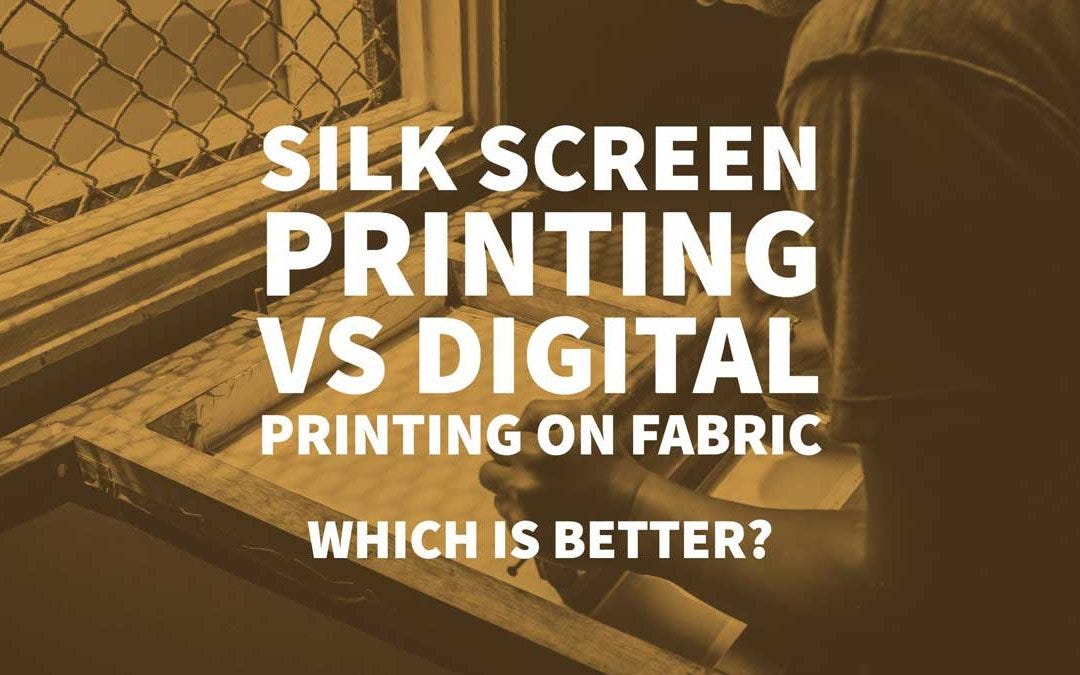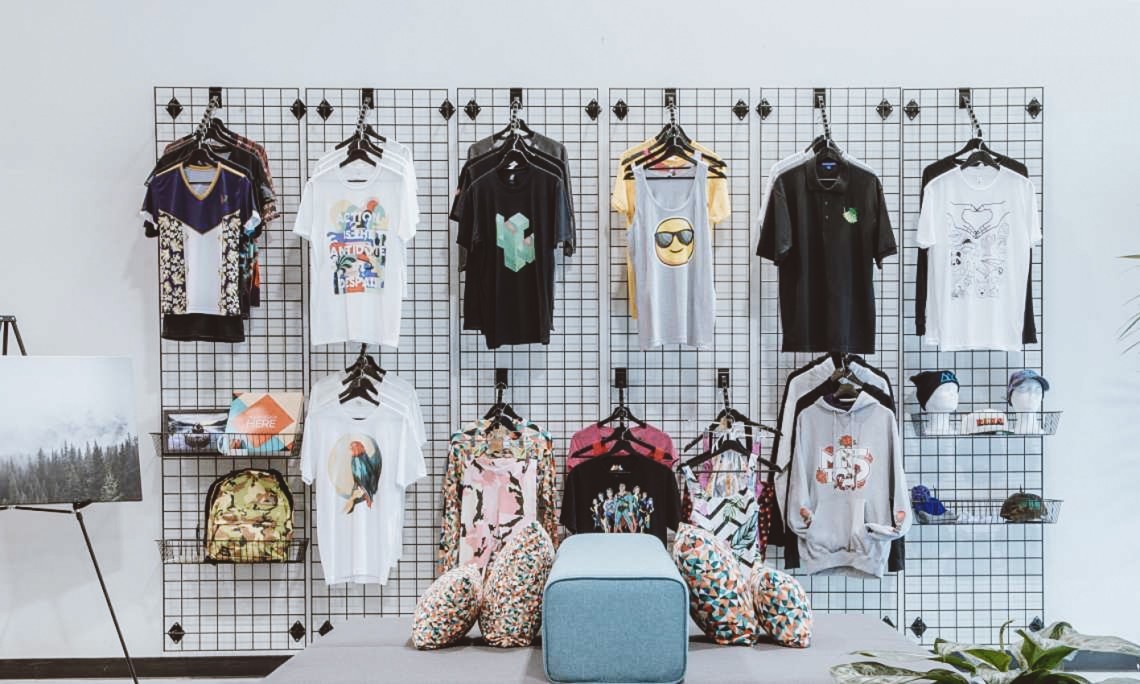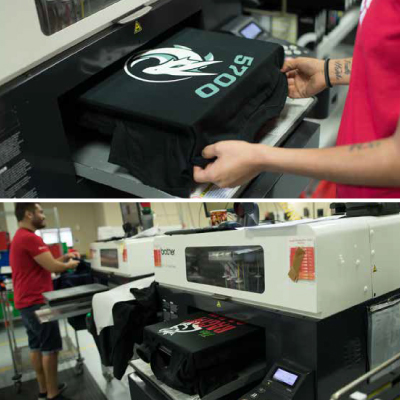Tx Tees for Beginners
Tx Tees for Beginners
Blog Article
Fascination About Tx Tees
Table of ContentsThe Of Tx TeesThe smart Trick of Tx Tees That Nobody is Discussing3 Easy Facts About Tx Tees ExplainedThe Facts About Tx Tees RevealedUnknown Facts About Tx TeesRumored Buzz on Tx TeesThe Of Tx Tees
Include up various other prices, like the number of utilities it takes to run the store and the expense of ink and solution per style. Take the print listed below.The solution must only be a few cents considering that you 'd just require to coat one screen for this job. Typically, printers try to make up to 45% earnings on a print job.

With DTF, you can print a handful of t shirts, or simply one. Make use of the exact same calculator as the section above to determine how much profit you would certainly make utilizing DTF transfers. Contrast the prices and revenues to whichever method talks best to your setup and procedure. Both screen printing and DTF have their specific niches on the planet.
Tx Tees - The Facts
The most effective means to know? Ask around and see what printing shop like your own are doing. screen printer. Attempt both out and see which you like better
When you're selecting what kind of printing approach to use for printing your artwork styles on your garments, it is very important that you know the distinctions in between these 2 strategies so you can optimize outcomes while minimizing costs. Screen printing is the most frequently used strategy for publishing layouts on fabrics.
DTG printing is additionally referred to as spot or straight to garment printing because it prints just what is required rather of making a screen as screen printers do. https://txtees02.bandcamp.com/album/tx-tees. Screen printing functions by display filler squeegee screen printing ink display mesh display, then moving the picture to garment using warm and/or pressure
The DTG printer makes use of unique dye-sublimation inks that are applied right into a pre-designed picture by a digital printing system. The inks become component of the textile, permitting dynamic shades and outstanding detail. It's likewise called spot or straight to garment printing because it prints just what is required rather than making a display as display printers do.
The smart Trick of Tx Tees That Nobody is Discussing
It's much faster - you can print a fullcolor picture in mins, as opposed to hours for display printing. Second, there's no established up time or prices involved - you can print any type of style you such as, without needing to develop a display first. Third, there's no waste - due to the fact that display printers display print one style each time, they need to evaluate each shade individually.
The paper is extremely costly and can only be used once. Once it's printed on, it needs to be discarded. - The first acquisition rate is less than the upfront investment of DTG printers- You can publish multi-color layouts one display at once rather than having to print each shade individually like DTG printing.

Examine This Report about Tx Tees
Instead of utilizing display mesh as screen printers do, dye sublimation printers utilize laser modern technology to transfer your images onto garments or paper. A warmth process transfers the color from its solid-state straight right into the gas stage which in turn merges it onto textile substratums when they are rapidly heated to high temperatures under high stress.
Sublimation printing is environmentally friendly. It utilizes much less water than screenprinting, and due to the fact that it doesn't involve using harmful solvents, it's safe for all kinds of clothing. The dye sublimation inks are likewise odor free when healed, unlike display printers that make use of harmful chemicals during the display printing procedure that leave an undesirable smell.
They additionally conserve money on costly equipment like exposure units considering that color sublimation printers do not need a UV direct exposure device or a flash cure oven that is normally used in screen printing (embroidery shop). What is straight to garment printing (DTG Printing)? DTG printing is a digital screenprinting procedure that prints straight onto material making use of specialized inkjet printers
All about Tx Tees
DTG printing supplies several advantages over standard screenprinting, including the capacity to print photographic top quality pictures, greater shade vibrancy, and the capability to print layouts on darker materials. DTG printers work by heating up the textile ink till it transforms into a gas. The gas after that permeates the textile, bonding with the fibers to develop a long-term print.

Display printers merely prepare their display after that start printing until they run out of item or ink.- There is a wide array of seasoned display printers throughout the globe, which can be practical for newbies. - It's a slower process - display printers usually need to wait on the ink to dry before they can print the following shade- Screen printers need hands-on labor, so there's a higher knowing curve and it takes longer to produce a top quality layout- Screen printing isn't as exact as DTG printing, so you might get some "bleeding" of colors go to my blog from one component of the photo onto one more if not done properly.
Rumored Buzz on Tx Tees
Rather of using display mesh as screen printers do, color sublimation printers use laser innovation to transfer your photos onto garments or paper. A heat procedure moves the dye from its solid-state straight into the gas stage which in turn merges it onto fabric substrates when they are rapidly warmed to heats under high stress.
Sublimation printing is environmentally friendly. It makes use of less water than screenprinting, and due to the fact that it does not entail using harmful solvents, it's risk-free for all kinds of clothing. The color sublimation inks are also odor-free when healed, unlike screen printers that use harmful chemicals during the screen printing procedure that leave an unpleasant odor.
They additionally save money on expensive tools like direct exposure systems given that dye sublimation printers don't need a UV direct exposure device or a flash cure oven that is commonly used in screen printing. What is direct to garment printing (DTG Printing)? DTG printing is an electronic screenprinting procedure that publishes straight onto fabric using specialized inkjet printers.
How Tx Tees can Save You Time, Stress, and Money.
DTG printing supplies many advantages over typical screenprinting, consisting of the capacity to publish photo quality photos, better color vibrancy, and the capacity to print layouts on darker textiles. DTG printers function by heating the textile ink until it develops into a gas. The gas after that penetrates the fabric, bonding with the fibers to produce a permanent print.
Report this page